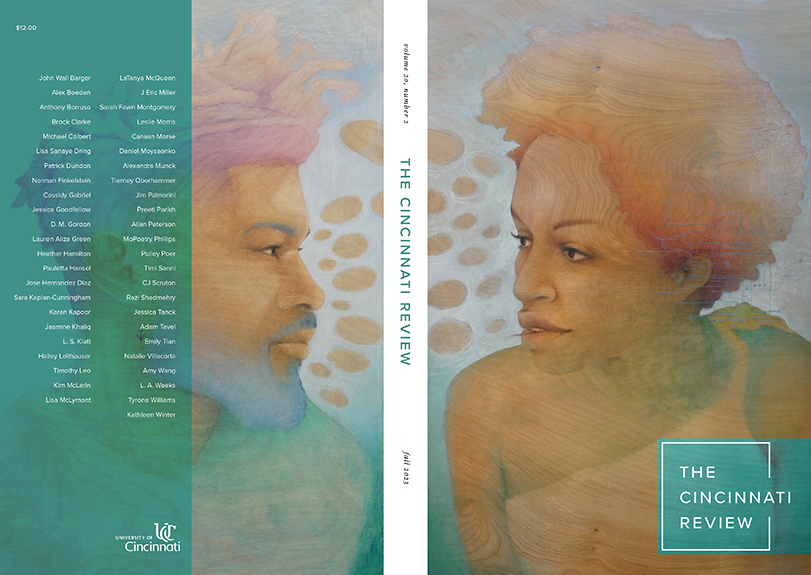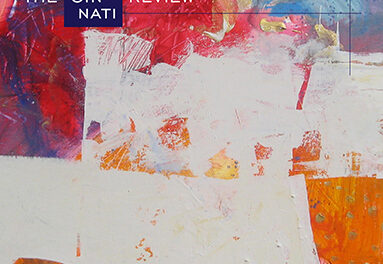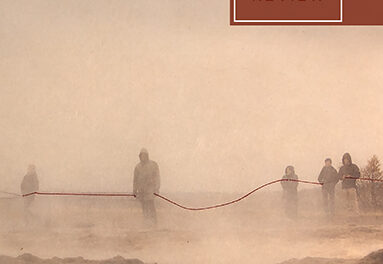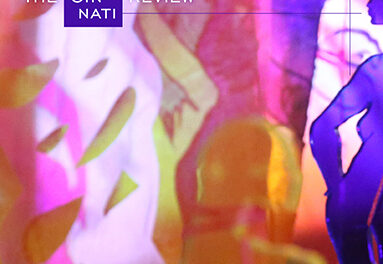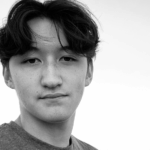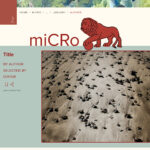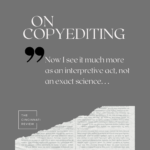In Issue 20.2, one of our twentieth-anniversary issues, we present a special feature on where writing lives in Cincinnati. We reached out to six writers who are current or former residents of the city, giving them the following prompt:
We’ve been thinking about Cincinnati as the site of intersections: of North and South, with the subversive crossing between them by the Underground Railroad; of the geography shaped by an advancing and then retreating glacier, the Ohio River, and the hills; of the Indigenous Algonquian speaking tribes, including the Delaware, Miami, and Shawnee tribes, whose land was taken by white settlers as it became known as Losantiville in 1888. We’re interested, also, in thinking about how the diverse strands of our literary community intersect (or not) here in Cincinnati. Though our various groups focused on creative writing have sometimes felt like separate silos, the Cincinnati Poet Laureate position, the Cincinnati and Hamilton County Public Library writer-in-residence program, and other initiatives like it are breaking down those divisions at times. What is the story of Cincinnati and its literature(s), from your point of view? Where does writing “live” here?
We’re pleased to share here L. S. Klatt’s contribution to the conversation. (Read the entire feature here.)
My life was in the poem and just outside it.
Nothing was written as it “really happened”
But all took place as rhyme and chance decided.
—Kenneth Koch, “Seasons on Earth”
I tend to think of Kenneth Koch as a father figure, my surrogate parent-in-poetry. He was born in 1925, predating the birth of my actual father by just a year. He attended Cincinnati’s Walnut Hills High School, where my own dad would later settle into a long and productive teaching career. As a soldier, Koch was hospitalized on Guam in the South Pacific at the same time his counterpart, Mark Klatt, was on the island guarding Japanese prisoners of war. They both were seventy-seven when they passed away.
Koch, you could say, was the bohemian father (bizarro dad) I never met—never met, that is, until I confronted him twenty years ago in David Lehman’s The Last Avant-Garde: The Making of the New York School of Poets (Doubleday, 1998). I was stunned to learn that Koch was from my native Cincinnati, as no famous poet I knew hailed from the Queen City. Apologies to Phoebe Cary, Raymond Garfield Dandridge, William Matthews, and my versifying contemporaries; I was embarrassingly clueless about the local literary scene.
Who was this guy Lehman called “our funniest poet,” a jester who, in the phrasing of John Hollander, fooled around with the “playful sublime?”
Still, I kept Koch at arm’s length. I approached him as I do most charismatic poets who catch my eye: circumspectly. I danced around the edges of his work, worried that his feverish turns of phrase would infect me, and made forays into the poems while always looking for an exit. I was attracted to Koch’s experiments, harebrained as some of them are, and wondered what, if anything, of his Midwest upbringing inspired them. But I was miffed that he appeared to hold no special regard for his hometown. In fact, he left Cincinnati for Harvard (then New York) as soon as he could, labeling his departure “THE ESCAPE.” Rather than cherish the city I am so fond of, he seemed imprisoned by its “bourgeois” sensibility.
Minus the country club to which his family belonged, I’m not sure what was “bougie” about the Avondale neighborhood where he came of age or how specifically his environs stifled him. No doubt, Cincinnati proper with its reputation for political conservativism must have seemed a little Waspy and uptight to any teenager feeling footloose or outright rebellious. But in many respects his hometown showed itself to be arts-forward and progressive, just the kind of cultural hothouse where a poet still green could germinate.
As a boy, Koch would likely have been exposed to the Cincinnati Symphony Orchestra, known for premiering works by Gustav Mahler and Aaron Copland, cutting-edge composers of the Jewish diaspora. He apparently also spent time in Eden Park at the Cincinnati Art Museum, the oldest such museum west of the Alleghenies (or so its website claims) and not averse to exhibiting works of the vanguard. And he would have had opportunity to frequent America’s first professional theatre for young audiences, the Children’s Theatre of Cincinnati.
These were places where teachers regularly led students to aggrandize their creative selves. I know; years after Koch, I was one of them. To sit in the velvet-cushioned seats of the Taft Theatre, watch the houselights come down, and witness a spectacle designed specifically for schoolchildren was metamorphic if also de rigueur.
What, then, was lacking artistically for Koch on the banks of the Ohio? Well, for one thing, Koch did not see himself as a regionalist or a landscape poet but as a poet of the inventive. It wasn’t that he was uninterested in naming what was around him; it’s simply that for him the inner world held so much more raw energy, and this inner world was reserved for play, not documentary. While he eventually discovered a mode that could render the “vacant lots in Cincinnati, . . . [the] suburban houses, the gutters, the automobiles, the schoolyards,” he was more invested in fresh expression and the imagination than in poems fixed on one place. Consider this impromptu poetic object lesson from his talk “Educating the Imagination,” composed in the manner of Walt Whitman, and Koch’s ensuing commentary.
I see the piece of paper and I pick it up.
I look at the piece of paper and see what’s written on it.
I read the words and they’re good words and I’m reading them to you.It’s terrific but what am I saying? The music makes it say something. And there’s always a possibility that once you get going in this motorboat, it’s going to go somewhere.
Koch’s ambitions elsewhere had to do with language itself, how it sings, how it surprises. To pursue such a poetry, he felt he needed a “bigger world” than Cincinnati, someplace aesthetically adventurous and expansive like Paris. Or New York. Lehman argues that New York was especially appealing to Koch and his comrade-in-letters John Ashbery because, as Ashbery had once written, New York is “a logarithm / Of other cities.”
The irony is that around the year Koch was leaving Cincinnati and its so-called provincialism, the illustrator Charley Harper was moving to Cincinnati for its cosmopolitanism. Harper arrived from Buckhannon, West Virginia, to study at the Art Academy. There he discovered abstract painting and began to model his own design aesthetic after modernists like Paul Klee and Ben Shahn. Harper’s iconic bird, fish, and animal serigraphs, under their influence and others’, favor geometric shapes and draftsman-precise lines. The creatures that animate his oeuvre are instantly recognizable but also hyper-stylized, decidedly unnatural.
Charley Harper is an example of a near contemporary of Koch’s producing whimsical, innovative artwork in the poet’s old haunts. Harper’s pilgrimage to Cincinnati seems to have been motivated by an impulse similar to the one that took Koch away. Both felt a devotion to creativity that required broader horizons than their birthplaces could provide, even if that meant relocating and abandoning family, friends, and neighbors. The call of the artist, for them, was spirited, certainly radical.
But Koch went further than Harper in this regard. As Lehman points out, Koch sought a “band of rivals” who equaled his enthusiasm, and found them in John Ashbery, James Schuyler, and Frank O’Hara. In Manhattan, he could count on a constant surge of artistic anarchy as well as several favorite hot spots for his circle of painters, poets, and musicians to drink at and talk shop: the Club, the San Remo, the Cedar Tavern. Could Cincinnati boast an equally “vital center”?
New York notwithstanding, Koch viewed himself primarily as a citizen of language itself. He took up residence in poems that made him feel the gorgeous and “luscious” intensity of words. The best poets could lead him to a “deliberate happiness” that he sought to replicate in lyric outbursts and sonic collisions. The poems didn’t have to mean; they had to radiate. “What I was doing and what my friends were doing in poetry was to get rid of the old, fat referential difficulty in order to break everything down into splashes, dots, and cubes and put it back together in an interesting way,” Koch said in “Educating the Imagination.” Such a method didn’t typically re-create a scene or memory. Place, in his poems, was relatively unimportant. The goal instead was verbal explosives, imaginative confetti:
Cherrywood avalanche, my statue of you
Is still standing in Toledo, Ohio.
O places, summer, boredom, the static of an acrobatic blue!And I made an amazing zinc airliner
It is standing this day in the Minneapolis zoo . . .Old times are not so long ago, plaster-of-paris haircut! (“The Artist”)
Like Toledo and Minneapolis, Cincinnati is referred to in The Collected Poems—along with dozens of other cities and states. These references indicate a rambling imagination in search of a composite American identity much like Whitman’s in Leaves of Grass. But unlike Whitman’s, Koch’s touring veers into the bizarre. The thinking is erratic; the lines go haywire. What fun! The New York School of Poets, after all, believed a poem is a playground where words run away with themselves, their exercise elastic and fluid. The poem’s recreational space, sealed off from the same old same old, makes room for recklessness that verges on nonsense but that is, in fact, generative new sense.
But how can this maelstrom be appealing? do you like menageries? my god
Most people want a man! So here I am
I have a pheasant in my reminders I have a goshawk in my clouds. (“Alive for an Instant”)
Said Koch about his kinetic exuberance: “Of course, everything, once it is written about, even if it’s a wild chaos, is bound eventually to become itself a sort of subject. I wanted to keep my subject up in the air as long as possible.”
After decades of offbeat projects, seemingly rootless, Koch was ready to settle down in the discursive and put the subject first, indeed, late in life, to turn to himself as subject. In New Addresses, published in 2000, two years before he died, he writes more transparently about his past and with more attention to the local. Time, as well as distance, now makes it possible for him to reflect on how the distinct geography of a region mapped onto his psyche, as in “To the Ohio,” or the extent to which his ethnicity played a part in shaping his perspective, as in “To Jewishness.” In these poems, Koch’s personal history doesn’t simply emerge as something we read between the lines; it takes center stage. Cincinnati is largely (though not exclusively) a German American town: German Catholics, German Lutherans, German Jews. “To Jewishness” reminds us that not every Cincinnatian’s “German” experience was the same. The tensions between these religious communities were especially pronounced in the 1930s and ’40s during a worldwide wave of anti-Semitism. Koch was faced with the dilemma many minority teenagers confront: if one of these allegiances is hostile to the other, to whom do I belong?
In fact, Koch expresses ambivalence about the two cultures—Jewish and American—essential to his outlook. The speaker of “To Jewishness” (presumably Koch himself) is drawn to what is, for him, off-limits. Jewishness “kept me out of the Harvard clubs,” but
Blonde
Hair, blue eyes,
And Christianity (oddly enough) had an
Aphrodisiac effect on me.
Still, he acknowledges that Judaism gave
ceremony
To everyday things, surprise and
Symbolism and things beyond
Understanding.
He even claims his ethnicity saved him “from the flatness of my life.”
I relate to Koch’s complicated relationship with his religious heritage. I experienced firsthand the parochialism of the Lutheran community that schooled and catechized me. I didn’t always know who I was; to wear my religion in public put me at odds with the secular neighborhoods that also were my home. I appreciated the spiritual dimension that Christian faith opened in me, and the cadences of the Scriptures would become second nature in my writing, but indoctrination didn’t encourage freewheeling self-expression or spouting off.
And like Koch, I suffocated in the suburbs. Cincinnati, by the ’70s, had become overrun with asphalt and concrete. The incursion of restaurant chains and strip malls, soon to be followed by big-box stores, awakened a desire in me to purchase everything in sight. If I wanted to be more than a consumer, I would have to be cast out, I would have to track down pockets of writers and readers in urban centers where I could cultivate the intellectual and creative life. I also would have to find a vernacular with which to express my dis-ease.
I knew none of this at the time. I was concocting a boyish version of Cincinnati. It’s a version I’ve come to love and have never gotten over. When I come back to the city, as I often do, I rehearse the past. True, I can’t relive the thrills of running to buy an ice cream cone from the Mister Softee truck on Trillium Court or sledding down the giant hill in French Park. But I do try to walk the river and see a Reds game and eat coneys at Skyline Chili.
This last visit, I rolled through Koch’s old neighborhood, Avondale, once home also to Steven Spielberg, who lived there the first four years of his life, 1946–1950, and home to who knows how many other dreamers. I only vaguely knew of another history of Avondale, where in the 1940s Black residents from the West End began to populate the neighborhood after being displaced by the construction of the Mill Creek Expressway. Nor did I understand the growing tensions as the village divided and the poorer residents settled into South Avondale, where they endured rising unemployment, crime sprees, police harassment, price gouging of goods and services, and rental units in disrepair—injustices that culminated in the race riots of 1967 and 1968. No. While the National Guard was patrolling the streets with machine guns and quelling unrest, I was up the road starting kindergarten at a Lutheran school in Silverton. I have no idea what my teachers were thinking at that time, but they had to be shaken. Meanwhile, unaware of the violence, five-year-old me was happily making popsicle-stick art and learning his letters.
Silverton, by all accounts, was becoming successfully integrated, spurred by the efforts of the neighborhood association and similar organizations that encouraged dialogue between Blacks and whites. The Lutheran school there was reaching out to the surrounding areas and recruiting Black students. They became my classmates. I can’t say with confidence that our experience at Our Redeemer was without conflicts. How could it have been? But we were mutually enriched, part of a social experiment ongoing in schools throughout the US.
As I have made my journey in poetry, I have reacted against the cringey aspects of my own suburban background and tried to believe that somehow the quixotic ’60s have seeped into my art. I have followed Kenneth Koch and his ilk (Wallace Stevens, Frank O’Hara, John Berryman, Allen Ginsberg, James Tate) into a comic surrealism. I needed such a tribe of lighthearted revolutionaries if I was ever going to explode onto the scene like they did and say new.
As American readers have turned toward political poems, however, I’ve had to reconsider the poetics I inherited, whose language—cordoned off from the world—insists on remaining potently, and probably naively, self-contained. I’ve been confronted with the fact that homogenized writers of my generation, when recalling their hometowns, are liable to leave out other perspectives, thus artificially whitening the neighborhoods they thought they understood so well. Poet-activist Nikki Giovanni, raised in Lincoln Heights and instrumental in establishing Cincinnati’s first Black Arts Festival in 1967, offers a welcome corrective:
childhood remembrances are always a drag
if you’re Black
you always remember things like living in Woodlawn
with no inside toilet
and if you become famous or something
they never talk about how happy you were to have
your mother
all to yourself . . .
and I really hope no white person ever has cause
to write about me
because they never understand
Black love is Black wealth and they’ll
probably talk about my hard childhood
and never understand that
all the while I was quite happy (“Nikki-Rosa”)
What I’m saying is that it’s not just my pseudo-parent Kenneth Koch to whom I owe a literary debt; there are whole neighborhoods of Cincinnati poetry I am only now, decades into my career, probing. And in exploring these cul-de-sacs, I am coming to apprehend in detail the contradictions of the town that birthed me. My birthplace, like my origin story, I go on vigilantly revising. Along with Koch,
To Cincinnati, though, I feel compelled,
To start my canto, since a sort of promise
Was made . . . (Ko, or a Season on Earth, Canto IV)
L. S. Klatt is the author of four volumes of poetry, including Cloud of Ink (University of Iowa Press, 2011), winner of the Iowa Poetry Prize.Recent poems of his have appeared in New American Writing, Northwest Review, Seneca Review, 32 Poems, Southern Review, Copper Nickel,and the New Yorker.

